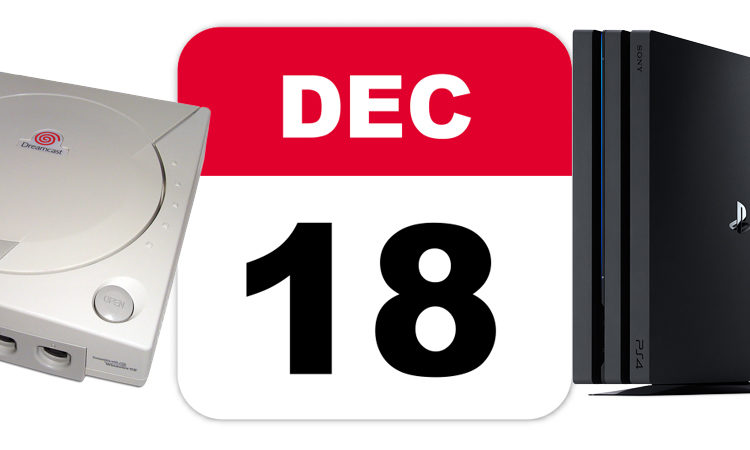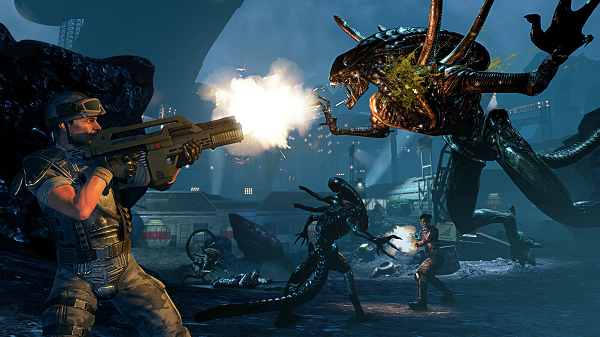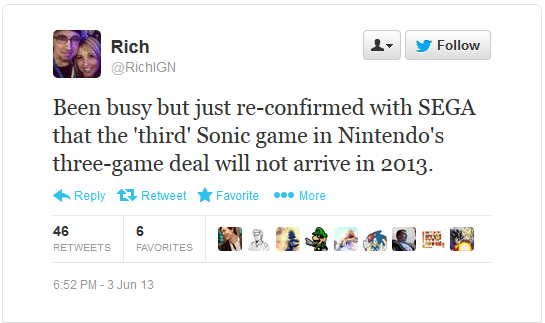December 18, 2018. That was the day that SEGA was in the third party business for as long as they had been in the home console business. For the past month we have been living in a new era. From the debut of the SG-1000 in Japan on July 15, 1983 to the official discontinuation of the Dreamcast on March 31, 2001, 6,470 days elapsed. From April 1, 2001 to December 18, 2018 another 6,470 days elapsed. We’re living in an era of SEGA that has survived longer than what many point to as the glory days. Let that sink in.
Interestingly, it seems that SEGA AGES Gain Ground and SEGA AGES OutRun are the first games to release in Japan and the West respectively in this post 6,470 day era. 2019 looks to be a HUGE year for SEGA, and we’re actually very excited. For a full rundown of what to expect from SEGA in 2019, you can check out our SEGA News Bits video.
Ad:





That’s crazy!
Just got SEGA AGES Out Run for Switch.
Love it! Here’s to a great 2019.
It’s great, but Imagine a scenario where SEGA never gave up the home console business and made a sucessor to the Dreamcast. The entire industry would be so much different nowdays, because SEGA were always ahead of their time.
Everyday we stray further from the light…
But weren’t they in the third party business before creating their own consoles, too?
Technically yes, but they have always been a hardware producing company as well as a software one, and they still are. Nintendo also used to have more of an Arcade presence once upon a time and even released their software on Atari home consoles like Mario and Donkey Kong. But where SEGA became the dominant force of the arcade sector of the industry, Nintendo did for the hand held portable sector – starting with their Game & Watch series which led to the Game Boy.
What SEGA did was enter the home hardware market in the early to mid 80s period after the 1983 Atari crash destroyed the American side of the industry (the crash never destroyed the UK/European and Japan/Asian sides of the industry), but their home hardware were just cheaper variations of their arcade consoles that were made specifically for the home market, which had the added benefit of making things more cost effective not only for S Sega consumers, but Sega developers and third party independent companies who used SEGA’s arcade consoles for their arcade games like Capcom and Tecmo – who first created Dead or Alive on Sega arcade console hardware, it made it cheaper to bring not ports, but actual ‘conversions’ to Sega home hardware, they were conversions and not ports because Sega home consoles were fundamentally based on the Sega arcade consoles architecture, making it cheaper to produce and less time consuming to develop.
So SEGA’s heritage was in brining the arcade experience to the home, that’s why they ever got involved with the home hardware market in the first place after Atari effected it and put the industry in a slump, it took foreign companies like Nintendo and Sega to revitalise the American side of it, while Sega was first in Europe before Nintendo and for two whole subsequent generations was ahead of Nintendo with the MasterSystem and MegaDrive, the Saturn was a decline there but it still did better than it did in America and in Japan, saw Sega finally overtake Nintendo fully there.
Of course, by the time the Dreamcast arrived, full ‘arcade perfection’ was finally achieved, and with that, one of Sega’s long held strategies with home hardware was finally fully achieved, but of course by then, the arcades were a declining sector in the west, and so a big part of Sega’s new strategy for the home market side of the industry was to spearhead and specialise in bringing online gaming to home consoles for the first time to have a major relevance in the home market aside from just being the company that brings the arcade to the house, of course, you know how that turned out and it was just too far ahead for the general market and so Sega lost its main reason for being involved in the home market, SEGA recognised they needed to be forward thinking as the market was moving on from their older strategy of arcade to home conversions, but bringing online from the PC to console scene was too future focussed for some people.
Nintendo today has continued building on their old strategy and continued to make it relevant in terms with their home hardware business, i.e., ‘re Switch is fundamentally evolved from the Game & Watch series – from the hand held/portable sector of the market – which has long remained Nintendo’s domain and seen them still be able to prop up their home console series even if they didn’t have success there, the same way that Sega used their Arcade dominance in Asia to prop their home console series up, until of course they tried to capitalise on becoming a network focussed company as well for the future.
One of Sega’s initial plans for the hardware market continuing on from the start the Dreamcast ushered in was to bring a new home hardware console in or a new device prototypes as ‘Receivership’ – it was in early talks from an older Gameplay article with the Sega president of time, Schoichiro Iramajiri.
And on the pedestal these words appear:
‘My name is Ozymandias, king of kings;
Look on my works, ye Mighty, and despair!’
Nothing beside remains. Round the decay
Of that colossal wreck, boundless and bare
The lone and level sands stretch far away.
This is kind of sad feeling with a hint of bittersweet irreverence topped on. I knew this day would come for years but now it has finally happened…
I hope Sega can go back into the console market one day.
Sega is not sega these days
Almost insane to think about how quickly time passes.